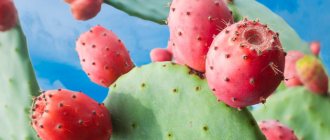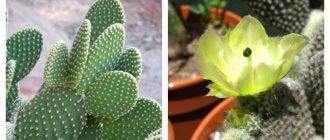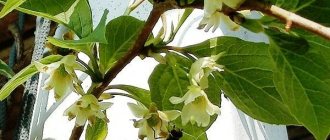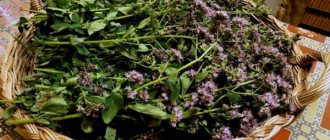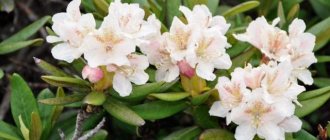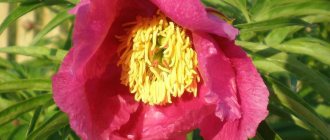Prickly pear is the largest genus of plants in the cactus family, with more than 300 different species. Initially, the growing region was North and South America - the plant was widely used by the Aztecs. The fruits and pulp of the cactus were used not only as a red dye, but also as food.
Modern scientific research suggests that the nutrients contained in this type of cactus not only reduce blood sugar¹ and cholesterol² levels, but can also affect the immune system (for example, helping to fight the herpes virus³) - and even hangover syndrome. What does this cactus taste like?
What it looks like and where it grows
Opuntia is a plant from the Cactus family, represented by several hundred varieties. It has dense oval stems with flattening, which branch abundantly and stretch up to 4 m above the ground. In good conditions, an adult cactus is a full-fledged shrub. The shoots of prickly pear are also its fleshy oblong leaves.
The plant is densely covered with buds with groups of spines and soft glochidia, blooms with yellow, orange and red single buds. Some of them subsequently produce fragrant, juicy fruits with flat seeds inside.
The berries of the prickly pear cactus taste like strawberries, kiwi or pineapple.
The culture is widespread in its natural form in Mexico, the West Indies, and North and South America. It is found in the tropics and subtropics around the world as an imported plant. In Russia you can see cacti in Crimea.
Recipes
What prickly pear recipes can you try at home? Here are some ideas:
- Try the fruit or pods in Mexican cuisine, such as in huevos con nopales (eggs with nopal) or tacos de nopales.
- Add some to fresh fruit or vegetable juices or smoothies. Prickly pear juice is sometimes called "jugo de tuna". It can be drunk on its own or used to make cocktails such as margaritas. The basic recipe for making jugo de tuna is as follows: Mix the fruit from 5-6 prickly pears with 4 cups of cold water. As well as the juice of 2 limes and 2 tablespoons of honey.
- Mix with other fruits in a fresh fruit salad.
- Boil the fruit to create a sweet syrup that can be used in desserts, candy or ice cream.
- Make homemade prickly pear jelly/jam, perhaps with chia seeds or combined with berries.
- Add cooked pads to salads and stews.
- Steep the fruit in hot water to make tea.
Chemical composition
Photos and medicinal properties of the prickly pear cactus are of interest to traditional medicine due to the rich composition of the plant. The shoots and fruits contain:
- protein compounds;
- vitamins B2, B3, B6 and B9;
- ascorbic acid;
- calcium, sodium and selenium;
- beta-carotene;
- leucine and lysine;
- vitamin A;
- zinc, copper, potassium and magnesium;
- threonine and isoleucine;
- fatty acid;
- phosphorus and zinc;
- tryptophan.
Products based on tropical cactus have a pronounced strengthening effect on the body.
Health Benefits of Indian Prickly Pear - Nutrition Facts
100 g of prickly pear cactus contains about:
- 40 calories
- 10 g carbohydrates
- 3.5 g fiber
- less than 1 g fat or protein
- 85 mg magnesium – 24% DV
- 14 mg Vitamin C – 17% DV
- 0.1 m Riboflavin/Vitamin B2 – 8% DV
- 0.1 m vitamin B6 – 8% DV
- 56 m calcium – 6% DV
- 220 m potassium – 5% of daily value
What are the benefits of prickly pear?
The prickly pear cactus is valued not only for its decorative properties. Medicines are prepared on its basis. In particular, the plant:
- relieves inflammation in diseases of the genitourinary system;
- relieves joint pain and eliminates bruises after injuries;
- improves the functioning of the cardiovascular system;
- helps with gastritis and stomach ulcers;
- improves metabolic processes and accelerates digestion;
- stops bleeding and disinfects wounds and cuts;
- equalizes glucose levels in diabetes;
- has a fixing effect on diarrhea;
- promotes weight loss and removes waste and toxins from the body;
- helps with headaches;
- improves the condition of skin and hair.
Remedies based on prickly pear cactus are used for adenoma and prostatitis in men. The plant can be used for colds and to treat pneumonia.
Prickly pear reduces the likelihood of developing cancer due to the content of antioxidants and flavonoids
What are the benefits of prickly pear fruits?
The edible berries of the prickly pear cactus are valued in traditional medicine for their healing qualities. You can use them:
- for kidney problems and swelling;
- with cystitis;
- for asthma and pneumonia;
- for inflammatory liver diseases;
- for diarrhea and bleeding;
- for diseases of the spleen;
- with varicose veins and thrombophlebitis;
- with high cholesterol and atherosclerosis;
- for intestinal infections.
Prickly pear fruits contain a large amount of vitamins and organic acids. Due to this, they can be used for anemia and as a prevention of scurvy.
Beneficial properties of prickly pear cactus oil
Prickly pear oil has valuable medicinal properties; it is used in cosmetology and medicine. The product is prepared from the seeds of the plant, and only about 1 liter of pomace is obtained from 10,000 grains. This is due to its high cost. Cactus oil has a bright yellow or greenish color and a pleasant herbaceous odor.
The product is used to smooth the skin and eliminate fine wrinkles, strengthen hair and treat dandruff. Cactus oil helps with sunburn and promotes the regeneration of damaged epidermis. It is used in aromatherapy for relaxation and added to soothing baths for stress and sleep problems.
Attention! Cheaper prickly pear squeeze is made by infusing the leaves and fruits in an oil base. But the healing properties of such a product are much lower.
Risks and side effects
Be careful when eating prickly pear as small spines may remain on the fruit and pods. They can irritate the inside of your mouth.
Some people have reported digestive upset after eating prickly pear fruit and juice. Potential side effects may include nausea, diarrhea, abdominal pain, bloating, and headaches. If you experience any of these symptoms when adding prickly pear to your diet, stop eating it for a while. Subsequently, it is possible to try again in a few weeks.
Adults with diabetes should use caution when consuming this plant. It can change blood sugar levels. Mature prickly pear pads also contain insoluble calcium oxalate crystals. It may worsen symptoms in people with kidney or health problems. So proceed with caution if this applies to you.
Are prickly pear seeds poisonous? No, however they are rarely eaten due to their hard shell. Instead, they are used to produce oil that is high in healthy fatty acids.
Methods of preparation and use
In folk medicine, water, oil and alcohol products based on beneficial tropical cactus are used. Some of them can be bought in specialized stores, others are suitable for making yourself from fresh raw materials.
Prickly pear tincture
Tincture of prickly pear cactus with vodka has pronounced warming, strengthening and anti-cold properties. It is prepared according to this recipe:
- Grind 100 g of plant leaves, previously cleared of thorns.
- Pour 500 ml of vodka into a glass container.
- Shake well and put in a dark place for 18 days.
- After the expiration date, filter.
We recommend reading: White steppe (bryonia): properties, use in folk medicine
Use the product in small portions of 15 drops three times a day for colds and inflammation.
Prickly pear fruit tincture is suitable for rubbing for rheumatism and arthritis
Prickly pear oil
Cactus oil is usually not prepared at home; it must be purchased in specialized stores. Industrially, the product is obtained by cold pressing from seeds.
Prickly pear oil contains large amounts of vitamins E and K, linoleic acid and phytosterols. It is used mainly externally - for facial skin care, with premature aging of the epidermis, to eliminate the consequences of sunburn.
Prickly pear cactus seed oil stimulates collagen synthesis in skin cells
How to cook cactus?
First of all, before cooking a cactus, you must carefully remove the spines and the hard part of the shell. As mentioned above, it is best to use young cacti - they are softer and have a distinct fresh taste.
The easiest way is to fry the cactus in a frying pan. Please note that you must first soak it in water (to remove sticky liquid) and then dry it thoroughly. Coconut oil is best for frying; you can also add red peppers, onions and tomatoes.
// Which oil is better for frying?
Smoothies and drinks
Traditionally, alcoholic beverages were made from prickly pear fruits. For example, the national drink of Malta, Ambrosia Bajtra liqueur, is a product of the processing of this particular cactus.
Pieces of pulp can also be used to make smoothies - cocktails based on green vegetables.
Use in folk medicine
For medicinal purposes, you can use prickly pear tincture, healthy cactus juice and decoctions based on it. Traditional medicine recommends taking medications for a wide range of ailments, to strengthen the immune system and for vitamin deficiency.
For rheumatism
For joint diseases, a strong tincture of prickly pear is especially beneficial. They do it like this:
- Green cactus stems are cleared of needles and crushed in a volume of 200 g.
- Pour 500 ml of high-quality vodka into a dark glass vessel.
- Place it in the dark and cool for two weeks.
- Remove regularly to shake.
The finished strained product is taken 15-20 drops for acute inflammation and pain. You can also use a paste of prickly pear leaves for compresses; it will help relieve swelling and restore mobility to the joints.
With weakened immunity
To strengthen the immune system, traditional medicine recommends preparing a tincture of prickly pear flowers. The recipe looks like this:
- Large buds in the amount of 4-5 pieces are mixed with partitions from three walnuts.
- Pour the components into 500 ml of good vodka and shake.
- Place the tincture in a dark place for a week.
- Strain through cheesecloth to remove sediment.
You need to take the drug 30 ml on an empty stomach. In total, treatment is continued for no more than ten days, after which a mandatory break is taken.
For pneumonia
The prickly pear cactus fights bacterial processes in the lungs and promotes coughing during pneumonia. The following decoction is recommended for use:
- Several fleshy stems of the plant are crushed to obtain 50 g of pulp.
- Pour the raw material with cold water in a volume of 100 ml.
- Bring to a boil on the stove and cook for another half hour.
- Cool and filter.
You need to take a small spoon of cactus decoction three times a day in between meals.
A decoction of prickly pear cactus helps relieve fever and fever during pneumonia.
For ARVI
To quickly cure a cold, traditional medicine advises preparing a medicinal mixture. They do it like this:
- Several prickly pear blades are crushed and mixed with two large spoons of linden flowers.
- Steam the raw material with 200 ml of hot water.
- Leave covered for 14 hours.
The finished collection is filtered and consumed three times a day after meals. A single dosage should be half a glass.
For asthma
Treatment with prickly pear is beneficial for bronchial asthma - the plant reduces the frequency of attacks. The tincture for therapy is prepared as follows:
- Mix 200 g of finely chopped green blades with 500 g of honey.
- Add 500 ml of high-quality Cahors.
- In a closed container, put away for 20 days in a darkened cupboard.
- Strain.
You need to take 15 ml of the tincture three times a day before meals. In total, treatment is recommended to be carried out no longer than ten days in a row.
For diabetes
Prickly pear cactus balances blood sugar levels and improves metabolic processes in diabetes. The plant is used as follows:
- Healthy green blades are cut off and washed to remove dirt.
- Remove all thorns.
- Grind the raw materials in a blender to a pulp.
The resulting mass should be taken three times a day before meals, 30 g, with a small amount of water.
Prickly pear cactus reduces cholesterol levels and prevents the development of atherosclerosis
For intestinal upset
Prickly pear helps relieve intestinal pain, normalizes peristalsis and improves the absorption of valuable substances. For medicinal purposes, it is recommended to take the following tincture:
- The green pulp of the cactus is ground in a meat grinder or blender.
- Half a glass of gruel is mixed with a glass of sugar.
- Place the mass in a dark place for three days.
- Add 250 ml of fortified red wine to the mixture and stir.
- Leave to infuse for another day.
The finished drink must be passed through folded gauze. Drink the tincture on an empty stomach, 15 m twice a day, in total you can use it for a month in a row.
When coughing
Prickly pear cactus helps remove phlegm and makes dry cold cough more productive. The following remedy is prepared for treatment:
- The cactus blades are crushed and 10 ml of juice is squeezed out.
- Mix with 10 ml of medicinal marshmallow infusion.
- Add 10 g of liquid honey and bring the mixture until smooth.
Recommended reading: Beneficial properties of elemi essential oil
You need to take herbal medicine based on prickly pear three times a day after meals, two large spoons. Before use, it is allowed to warm it up a little, but only until warm.
For cystitis
A decoction of prickly pear roots works well against inflammatory processes in the urinary tract. It is done according to the following algorithm:
- Medicinal raw materials are crushed using a blender or meat grinder and the juice is squeezed out.
- Add 50 ml of water to the remaining cake.
- Pass it through gauze again.
The finished mixture is consumed 30 ml three times a day on an empty stomach.
It is allowed to eat the infusion of prickly pear juice with honey, but it is not advisable to use sugar
For gastritis
The properties of prickly pear speed up digestion and are beneficial for gastritis with slow production of hydrochloric acid. Traditional medicine recommends this recipe:
- The green stems of the plant are cut into the volume of three large spoons.
- Place in a thermos and add chopped tangerine peel.
- Pour in 500 ml of hot milk.
- Leave to infuse for 14 hours.
The strained drink should be consumed three times a day, 125 ml each.
For prostatitis
A decoction of prickly pear cactus relieves pain and inflammation due to prostatitis. During the period of exacerbation of the disease, it is recommended to use the following remedy:
- Prickly pear blades are finely chopped or crushed in a blender.
- Measure out 50 g of gruel and pour in 100 ml of cool water.
- Boil and then simmer over low heat for 25 minutes.
- Cool under the lid and filter.
The decoction should be taken three times a day, 50 ml on a full stomach. Therapy is carried out for a month, then take a break for three weeks and, if necessary, repeat the course.
Home care
The main task is to ensure proper wintering, gradual exit from the dormant phase and long daylight hours during active growth.
It is possible and advisable to place a houseplant in the fresh air in the summer, for example on a balcony, but keep it away from drafts. Flowering is difficult to achieve and only with proper care:
- cold winter;
- bright sunlight during activity;
- do not disturb if buds appear.
Temperature
The optimal temperature from November to February is +5...10C. If kept warm in winter, the plant will not fall asleep and will stretch out greatly. In March, the temperature rises to +15...20C. Summer mode +23…35С.
Lighting
During dormancy, it is better to keep the plant in a dark or shaded place. A sleeping cactus does not need light.
At the end of February and beginning of March, he is quickly accustomed to the sun. During the period of activity, prickly pear needs long daylight hours . She is not afraid of the aggressive sun and needs direct sunlight.
The best place is on the south and southeast windowsill. The north and west sides are too dark. Here the cactus should be illuminated with a phytolamp. With a lack of lighting, the color of the cladodes fades and the silhouette becomes elongated.
Watering
Water in the morning or early afternoon with warm drinking water. In spring and summer, as the top part of the soil dries out (once every 3-5 days). In autumn - after the earth has completely dried (once every 7-10 days). By winter, watering is gradually reduced. During the dormant period, the cactus is not watered. Overwatering is worse than lack of moisture . Stagnation of water provokes rapid rotting of the roots.
Fertilizer
Does not need frequent feeding. Fertilizers are applied only to moist soil:
- twice in the spring - March, April;
- once in the fall - a month before the resting phase.
Use a liquid complex fertilizer for cacti and succulents or a universal nitrogen-free fertilizer based on phosphorus and potassium.
How to transplant?
After purchasing, the prickly pear is immediately transplanted into a new pot and the substrate is changed. This is a necessary measure to prevent possible diseases. Planned replanting of house plants is carried out in March or September.
- The soil is porous, slightly acidic, moisture-permeable. A mixture of leaf (2), clay-turf soil (2), coarse sand (2) and brick chips (1) is suitable. Or ready-made soil for cacti and succulents.
- The pot is ceramic, heavy, with thick walls and drainage holes. The shape is wide and squat, 2-4 cm wider than the diameter of the root system. Over time, the roots should entwine the entire earthen ball.
Work order:
- Watering is stopped 3 days before planting.
- 1 cm of coarse-grained drainage and part of the soil are poured onto the bottom of the pot.
- Prickly pear is transplanted only by transferring it from dry soil to dry soil.
- A cactus with a lump of earth is placed in a pot without deepening the root collar and sprinkled with soil.
- The plant is allowed to rest for a week in a shaded place.
- After a week, they are transferred to the light and watered for the first time.
- Fertilizer is applied 2 weeks after transplantation.
Young plants are replanted annually, adults - once every 3-4 years.
Important! Thick gloves will protect you from glochidia.
Trimming
Decorative or sanitary pruning is not carried out on an ongoing basis, but only when necessary:
- the bush is thickened;
- the stem has become very elongated;
- weak branching;
- large and unstable plant;
- stopping growth or falling off during the period of activity;
- signs of the disease - yellowing or wrinkling of individual areas, spots on the stem.
The prickly pear is pruned at the junction of the clodidia .
Cut off several single shoots or part of the stem. Healthy fragments can be rooted. The diseased areas are thrown away. The cut areas are sprinkled with charcoal powder or cinnamon. If the pruning was sanitary, the sections are disinfected with a fungicide solution (fundazol). Water after 3-5 days. Further care according to the standard scheme.
Adult plants are pruned in the summer (after flowering) or early autumn, and young, non-flowering cacti - in the spring (April, May).
Important! To create a decorative appearance for young prickly pear, it is better not to cut off new shoots, but to pinch them.
Application in cosmetology
The valuable properties of the prickly pear cactus are often used for skin care. The easiest way is to add a few drops of cosmetic oil from the seeds of the plant to regular creams and masks. It is also allowed to apply the product to the skin in its pure form, gently rubbing until completely absorbed. It is important to ensure that the squeeze does not get into your eyes, as this can cause irritation.
Prickly pear oil is also used:
- for the care of weakened hair - the product helps eliminate dandruff and stimulates the growth of curls when rubbed into the area at the roots;
- to restore split ends - simply rub the oil in your hands and apply it to damaged strands;
- for massage - prickly pear is used as an independent preparation or mixed with basic and essential extracts;
- for an even tan - the product is applied to the skin after exposure to the sun to prevent redness and provide a beautiful shade of the epidermis.
You can add prickly pear cactus oil to soothing and healing baths. Usually, only 10-15 drops are enough per filled container.
Infusions of prickly pear blades are suitable for daily washing for problem skin
Advice! When preparing baths, combining prickly pear oil with milk, cream and honey is especially beneficial; this mixture relaxes the nervous system and improves skin condition.
Popular types
White-haired prickly pear
White-haired prickly pear
The main feature of this species is its long and thick white spines. The cactus blooms with small, fragrant yellow flowers.
Berger's prickly pear
Berger's prickly pear
Bush-like prickly pear up to 1 m high with angular leaf segments up to 25 cm long. Long yellow spines cover all stems. The plant has beautiful red-orange flowers.
Opuntia main or main
Opuntia main or main
A cactus with long shoots consisting of blue-green or reddish leafy shoots. This cactus has few spines. The flowers are large, pink or bright red.
Opuntia long-awned or long-spined
Opuntia long-awned or long-spined
This cactus looks like a miniature bush. Small - up to 3-4 cm long, oval or rounded leaf segments form chains of creeping shoots. Tufts of red glochidia and spines grow from the dark areoles. This prickly pear blooms with bright red or orange flowers.
Prickly pear
Prickly pear
Opuntia up to 50 cm high with branched stems and yellow flowers. The leaf segments are round, small in size, dark green in color. White areoles with tufts of small glochidia are often located on the entire surface.
Opuntia mighty
Opuntia mighty
A tree-shaped cactus with thick, rounded gray-green segments. White or yellow spines grow from sparsely spaced areoles.
Opuntia cylindrical
This plant has a single bright green cylindrical stem that begins to branch with age. Blooms with bright red flowers.
Opuntia fig
Opuntia fig
A tall plant with shoots typical of prickly pear. It blooms profusely with yellow flowers, which produce tasty and juicy fruits.
If you are interested in learning about other types of cacti, you can find that information here.
Contraindications to the use of prickly pear cactus
The benefits and harms of prickly pear are not always clear. In some cases, the use of cactus-based products is not recommended. Contraindications include:
- individual intolerance;
- chronic kidney disease;
- large stones in the bladder;
- pregnancy and breastfeeding.
Tropical prickly pear juice can cause migraines, skin rashes and nausea. For the first time, cactus remedies are tried in small dosages and only if there are no side effects, full treatment is started.
Collection and preparation
It is recommended to collect for medicinal use young stems and leaves of tropical cactus, reaching the size of a human palm. The skin of the blades should be green and shiny, no more than 1 cm in thickness. When cutting leaves, you need to wear thick gloves so that the plant’s spines do not leave scratches on the skin.
Fresh stems are usually used for medicinal purposes, but if desired, the raw materials can be placed in the refrigerator for 2-3 weeks. For storage, the blades are packaged entirely in cling film or pre-cut into pieces and sealed in an airtight container.
The fruits of the prickly pear cactus are harvested in August, when they acquire a ruby red color without a green tint. Such berries are easily separated from the blades and have a sweet and juicy taste. They are best consumed fresh, but you can put the fruits in the refrigerator for several days.
It is recommended to take prickly pear cactus juice immediately after preparation.
Advice! For long-term storage, prickly pear blades and berries are frozen at sub-zero temperatures, which increases the shelf life to six months.
Reproduction
If you suddenly want to propagate Opuntia, you can do this in two ways:
- Seeds;
- By cuttings.
Seeds
This method is not very popular, because it is quite problematic. Not all seeds germinate, and it even happens that none at all. We have previously written about how to grow cacti from seeds, so the principle here is exactly the same, but there is one difference. Opuntia seeds have a rather dense shell, so they should first be rubbed with a file or sandpaper, and then soaked in potassium permanganate.
And then everything is as usual. Soil is poured into the greenhouse, holes are made there and seeds are planted. After this, you need to wait for shoots. The first transplant is performed after 3 months. More details are written in our separate article.
Cuttings
The most preferred method, which is much more effective than the previous one. There is nothing complicated about cuttings. First of all, take a well-sharpened knife and select any healthy shoot on the stem. Then, it should be cut off and then placed in an upright position in a place where it can dry a little. Usually it takes 3-4 days until a film appears at the cut site.
Also read: Ball-shaped cactus - Gymnocalycium
Next, the dried cuttings should be planted in a container with wet sand, to a depth of 5-6 cm. The container itself must be covered with cling film and allowed to be ventilated periodically, as well as occasionally watered. As soon as the seedling has roots, it should be transplanted. How to do this can be read above.
